Stairs, Passages, Parking, Amphitheater, Subway Headhouse
Istanbul, Turkey
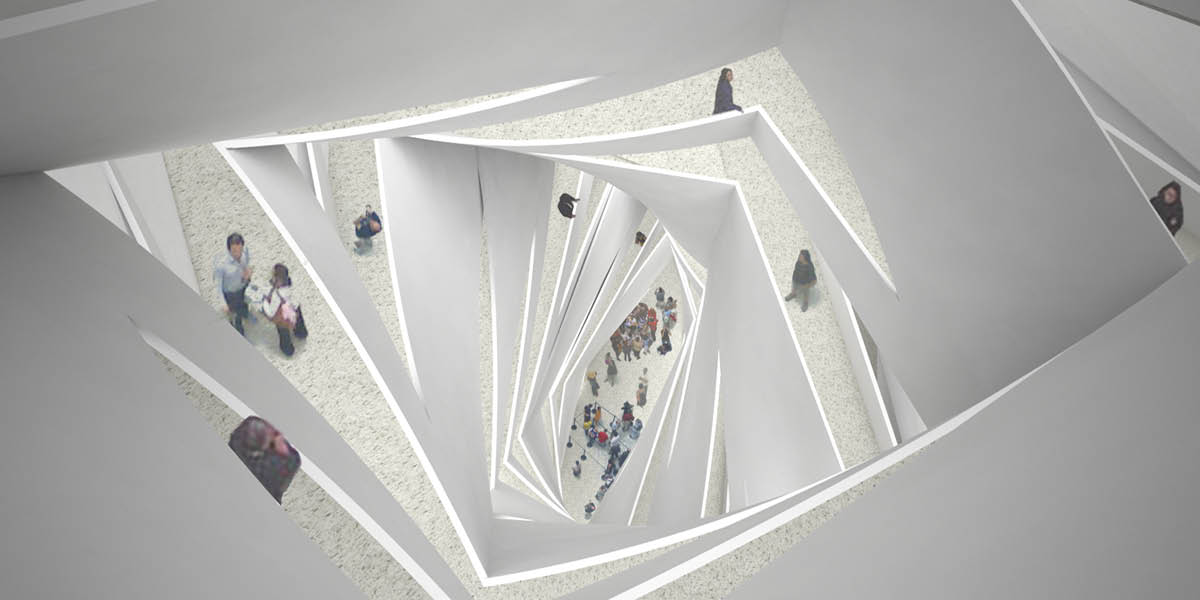
Extending a pedestrian corridor through a Baroque network of objects
Five sequential objects extend the Istiklal pedestrian corridor, Istanbul’s main commercial pedestrian thoroughfare, to a newly activated waterfront. Combined, these objects physically integrate three culturally and socioeconomically disparate neighborhoods, which have been isolated by topography, infrastructure, and incompatible uses.
Similar to the Baroque conception of the city as a network of monuments and axes, this strategy focuses resources on discrete objects that connect and activate the spaces between, as well as provide transit links to the greater city beyond. Both internally and externally oriented, these five semi-follies become attractions in their own right while reconfiguring our physical, visual, and psychic relationships to the city.
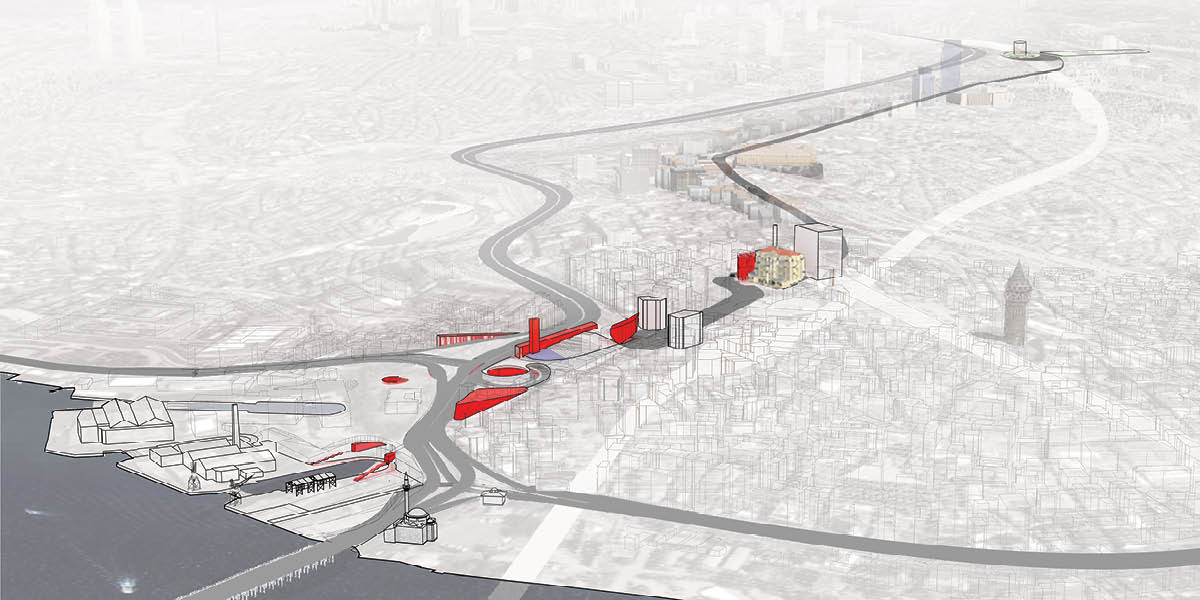
An Urbanism of Infrastructural Objects
Bridging a bridge landing to connect the city's main pedestrian axis, Istiklal, to the waterfront and beyond
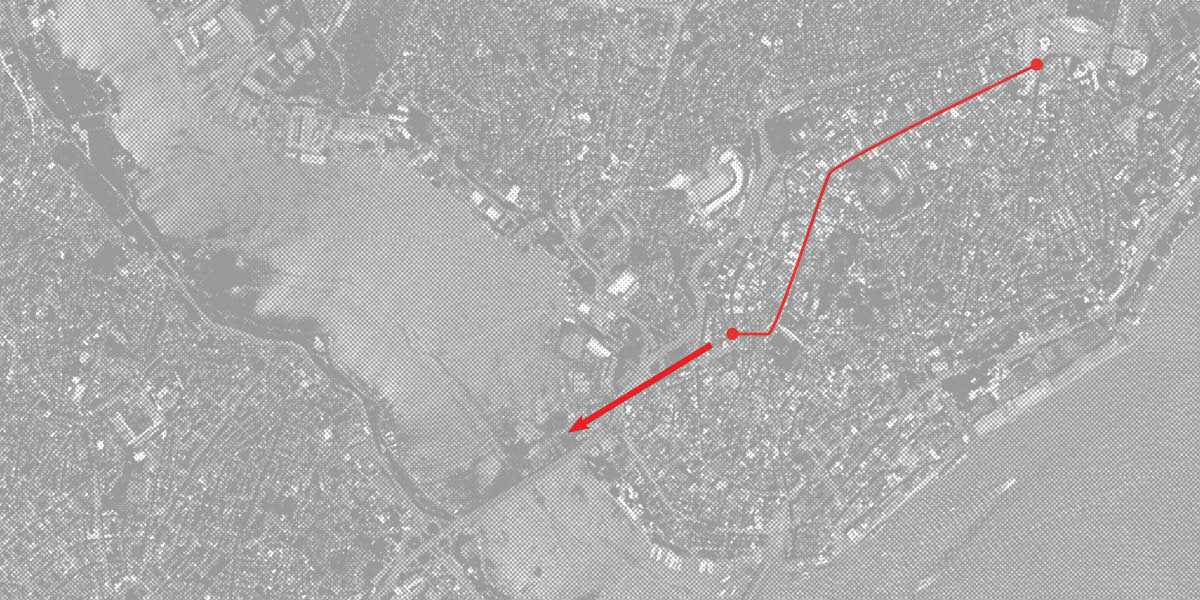
City-scale transformation:
Extension of axis creates a larger urban connection, from Taksim Sqaure to the City Hall
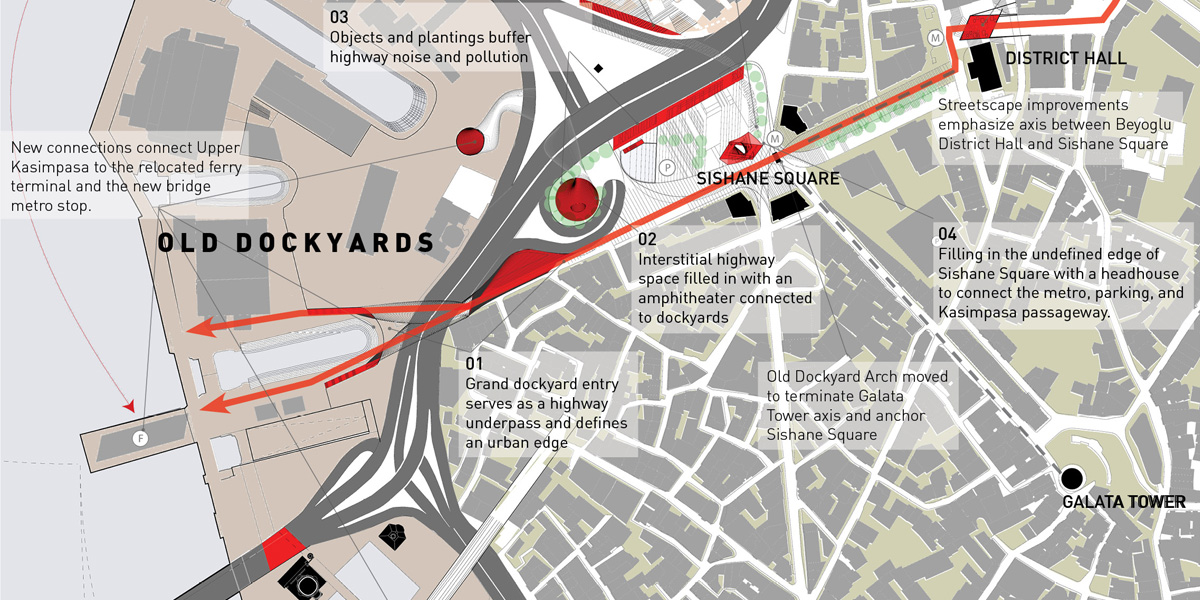
Neighborhood-scale transformation:
Five neo-Baroque objects connect three neighborhoods divided by topography, infrastructure, and incompatible uses
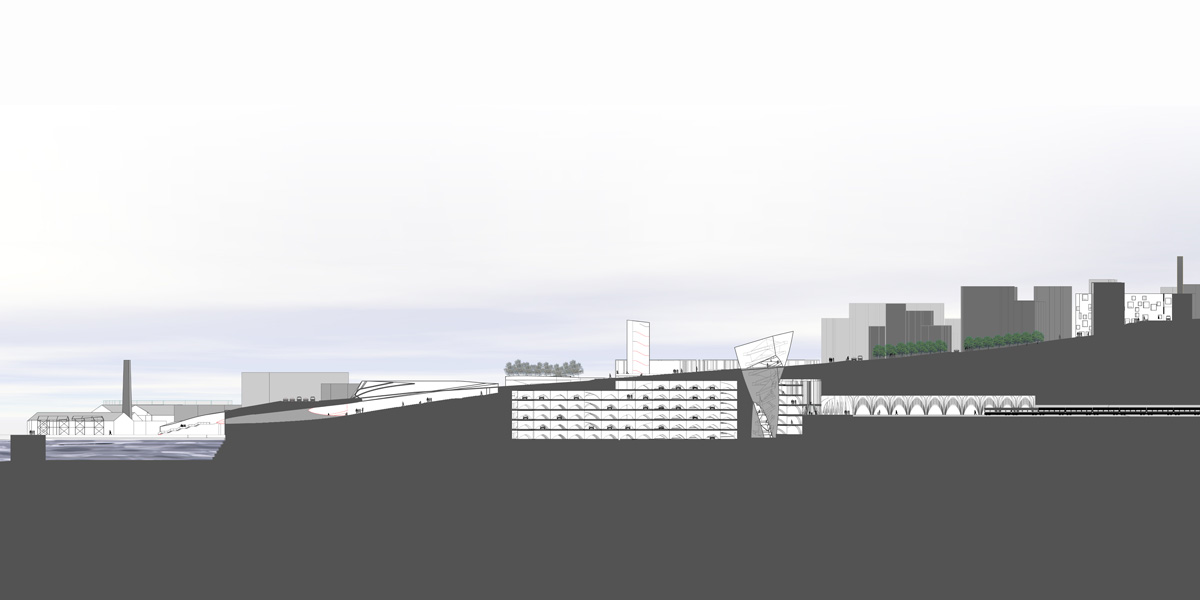
Section along waterfront to Istiklal extension
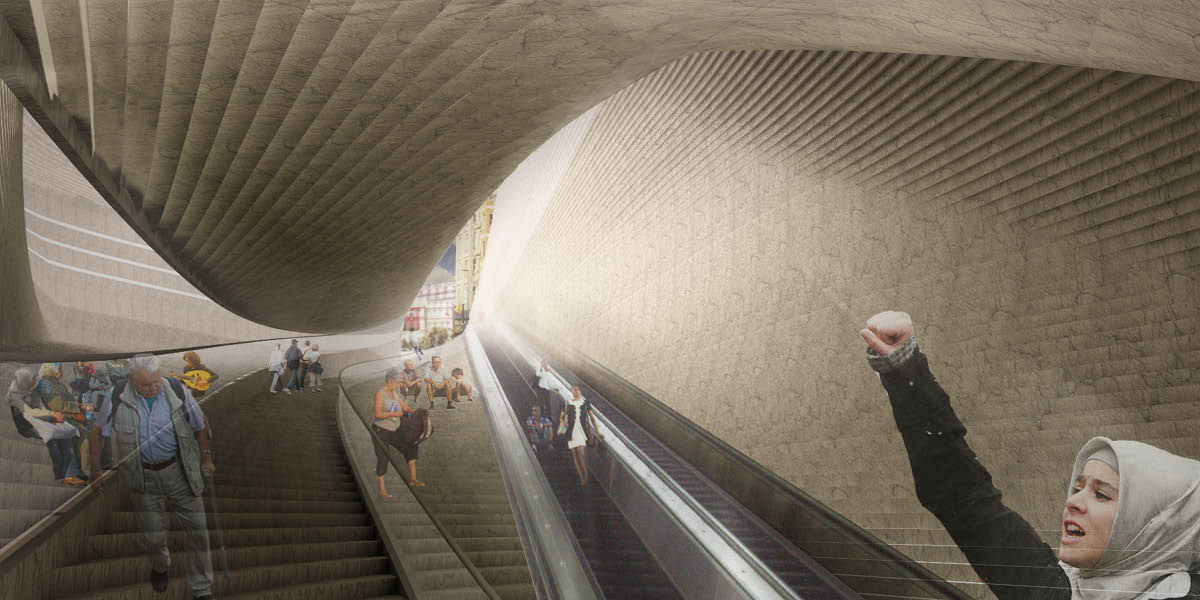
Highway underpass: Spiraling Gallery connects dockyard ferry terminal to Upper Beyoglu, frames view to Beyoglu District Hall
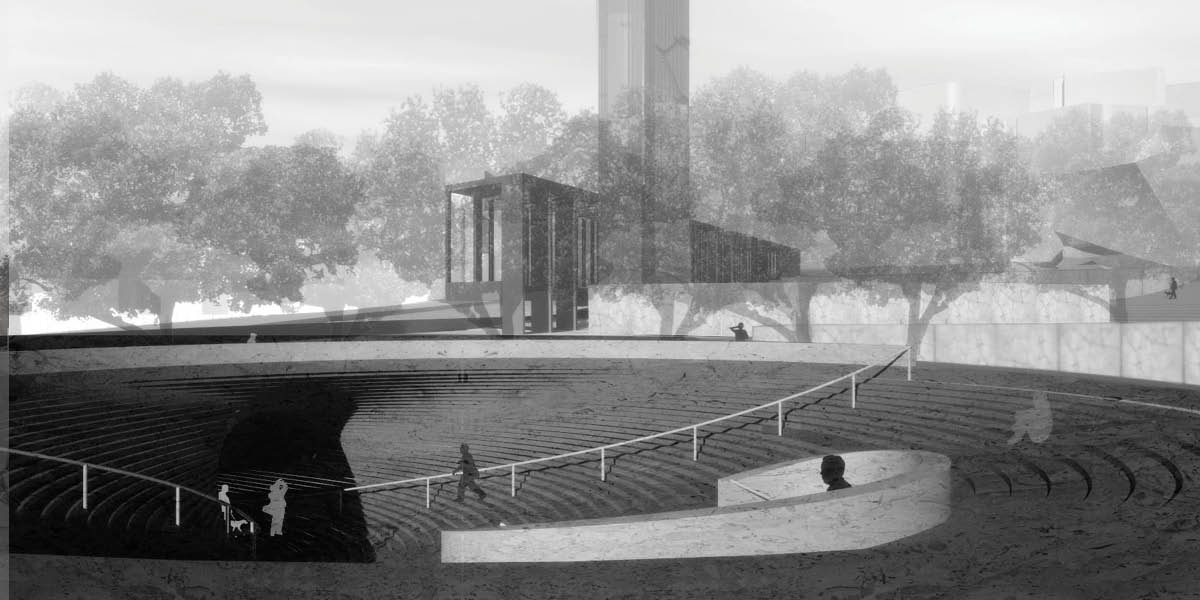
Leftover highway space filled in with an amphitheater enlcosed by trees and connected to former dockyards

Subway headhouse/observatory: Torsioning Kaleidescope
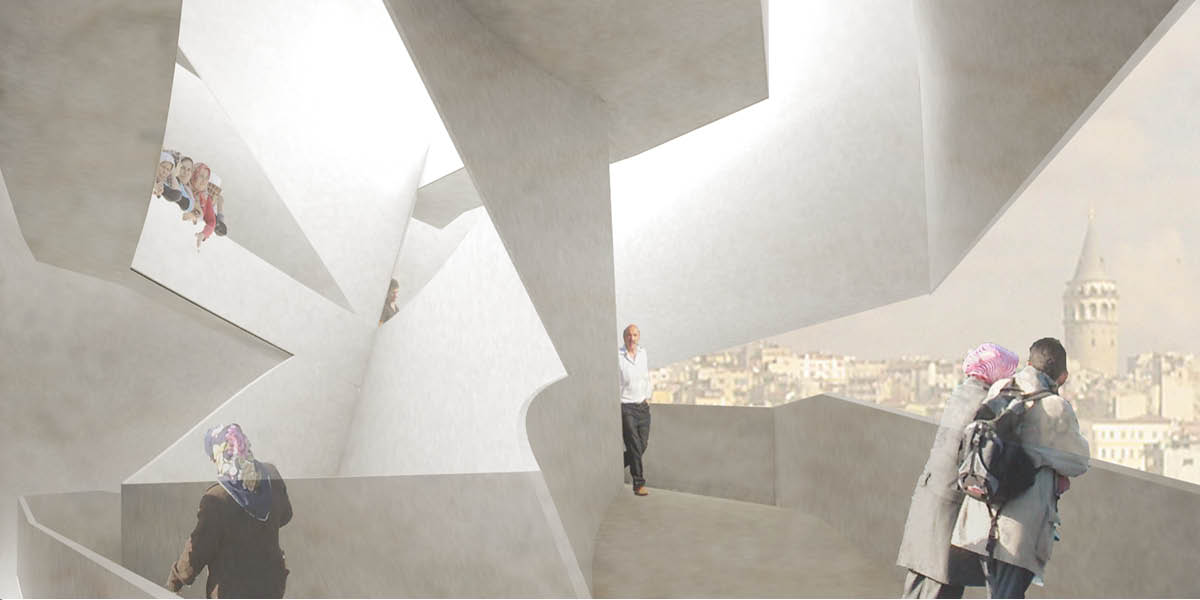
Intro/Extroverted Urbanism: Double spiral system conflates readings of floor and balustrade while opening panoramic views
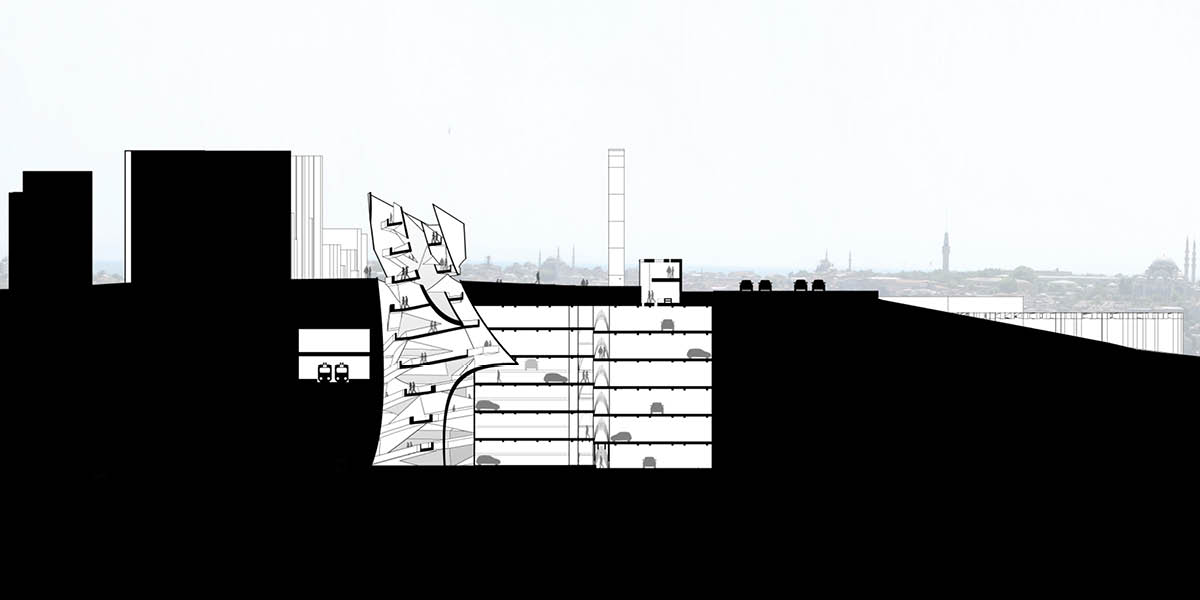
Section through subway headhouse, parking garage, and passageway
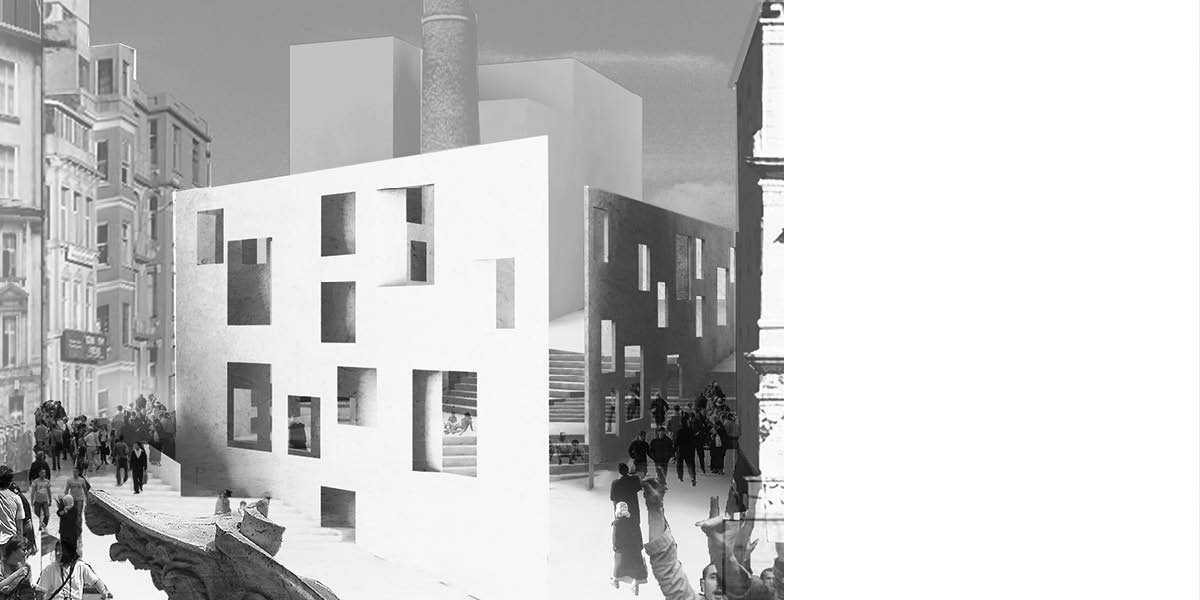
Istiklal pedestrian axis continues with an urban staircase framed by references to the neighborhood's famed arcades